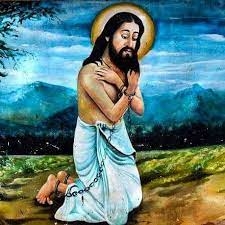
.png) Dr Suresh Mathew
Dr Suresh Mathew

It is not always that a saint is born from among the lay people in the Catholic Church. In India it had never happened in the 2000 years of her existence. Turning a new leaf, Church in India has got her first saint from among the lay persons in the form of Martyr Devasahayam. A lot about Devasahayam’s life is exceptional and, probably, one of its kind. He was born into a Hindu Nair family on April 23, 1712 in Kanyakumari district which was part of the erstwhile Travancore kingdom. The fact that his father was working as a priest in a temple tells a lot more about his early days. He was inculcated with Hindu beliefs and traditions from childhood. It is nothing less than a miracle that someone born and brought up in orthodox Hindu beliefs, traditions and rituals turned to Jesus Christ and came so close to Him to be raised to the hallowed family of saints.
Devasahayam’s path to sainthood was paved with thorns and spikes. He was a member of the royal service of Marthanda Varma, the then ruler of Travancore, and was in the good books of the king for his commitment to work. Meanwhile, he came in touch with De Lannoy, a Dutchman, who was the commander of the Travancore army. De Lannoy’s Christian faith interested Devasahayam and their interaction led to the conversion of the latter who took the name Lazarus. His wife, Bargavi Ammal, too converted to Christianity and took the name Gnanapoo Ammaal (equivalent to Theresa in Tamil & Malayalam). Records show that the caste Hindus and their priests brought false charges against Devasahayam and he lost his job. He was accused of treason and divulging state secrets to rivals and Europeans.
It was the beginning of his long line of troubles and tribulations. He was let off in a forest where he went into deep meditations, and people from the adjacent villages began visiting him. According to the belief of the locals, the people of the area flocked to him and many of them were cured of illnesses. However, the high caste Hindus plotted to do away with Devasahayam, and he was shot dead on January 14, 1752. Later his body was recovered from the forest and his mortal remains were interred near the altar inside St. Francis Xavier's Church, Kottar, Nagercoil, which is now the diocesan Cathedral. 
Herein lies the uniqueness of Saint Devasahayam. His new found faith and belief made him not just a believer in Jesus Christ, but a true follower of Him and His values. Nothing deterred him from his faith in Jesus, not even death threats. Nothing frightened him from preaching the equality of all people at a time and place where caste and religious differences were deep-rooted. His sainthood – a crown of his martyrdom -- reminds us of the price Devasahayam had to pay for embracing Christianity and remaining firm in his faith. His sainthood tells us that though most of the saints belong to religious communities, the Church has to look in the direction of lay faithful who have led an inspiring life, holding faith and values close to their heart. There were many such ‘saints’ among the lay faithful – not officially canonized -- across the world who lived a Christo-centric life. There is still no dearth of such ‘living saints’ in the present-day world too.